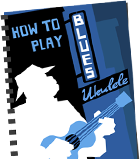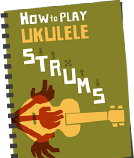The Beatles – Now and Then (Tab)
The Beatles aren’t going to let a little thing like half the band being dead stop them making hits. And their latest is the earworm Now and Then.
Intro: Some simple strumming to start with.
Verse: There’s a lot of barreing going on in the verses. Which makes it a bit of stamina test for the fretting hand. But nothing difficult to play.
Chorus: The “Now and then” bit is played on the g-string. So make sure you emphasise it enough for it to register as the melody.
Watch out the second time around as the solo cuts the chorus short.
Solo: For once, the solo is very easy. A few notes sliding around but mostly strumming chords.
Outro: A change in time signature and descending chords against a pivot (A-string, 5th fret). My favourite part of the song.
Links
Buy the original
More Beatles tabs and chords
Uke Hunt Patreon


